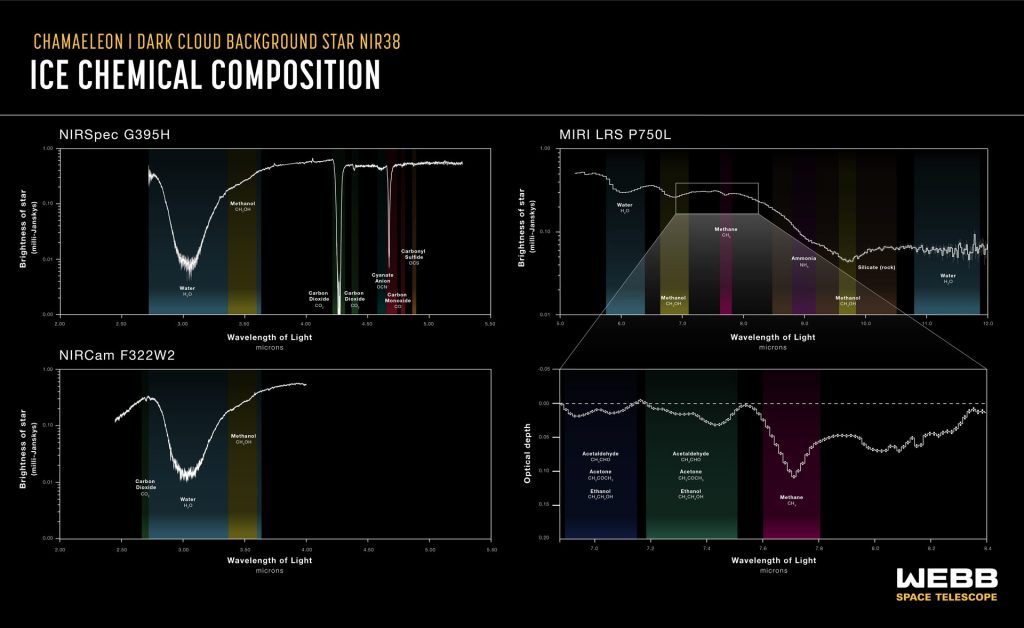An international team of astronomers has presented the results of the most detailed analysis to date.
Scientists explore cold and dense regionsmolecular cloud Chameleon I, located about 500 light years from Earth. In addition to the usual water ice familiar to the Earth, researchers have identified frozen forms of a large number of different molecules in outer space: from carbon dioxide, ammonia and methane to methanol (methyl alcohol), the simplest form of complex organic matter.
 Results of an analysis of changes in the light spectrum of the NIR38 star as it passes through the Chameleon I molecular cloud. Image:
Results of an analysis of changes in the light spectrum of the NIR38 star as it passes through the Chameleon I molecular cloud. Image:
NASA, ESA, CSA, and J. Olmsted (STScI), K. Pontoppidan (STScI), N. Crouzet (Leiden University), and Z. Smith (Open University)
Moreover, the researchers discovered traces of signaturesorganic molecules more complex than methanol. Although astrophysicists have not yet been able to determine exactly what these molecules are, this clearly indicates that relatively complex prebiotic organic molecules are formed in clouds of dust and gas even before the birth of stars.
Our results give an idea of the initial,a dark chemical stage in the formation of ice on interstellar dust particles, which will later grow into centimeter-sized pebbles, and then into protoplanetary disks.
Melissa McClure, astronomer at the Leiden Observatory and study co-author
The ice looks like gaps against the background of continuousstarlight, scientists note. In such cold and dense regions, most of the light from the background star is blocked. To study the composition of molecular clouds, researchers needed the sensitive optics of the James Webb. The researchers found and studied molecules based on how very faint starlight is absorbed at certain infrared wavelengths.
Molecular cloud Chameleon I as seen by James Webb
The authors of the study believe that the results of the observation will help to better understand the formation of simple and complex molecules needed to create the building blocks and form habitable exoplanets.
Read more:
Benefits of vitamin D for cancer prevention vary by weight
Hidden colony of penguins accidentally discovered from space images
A giant sunspot is turning towards the Earth. It is visible to the naked eye
On the cover:Chameleon I cloud through the lens of "James Webb". Image: NASA, ESA, CSA, and M. Zamani (ESA/Webb); Science: M. K. McClure (Leiden Observatory), F. Sun (Steward Observatory), Z. Smith (Open University), and the Ice Age ERS Team